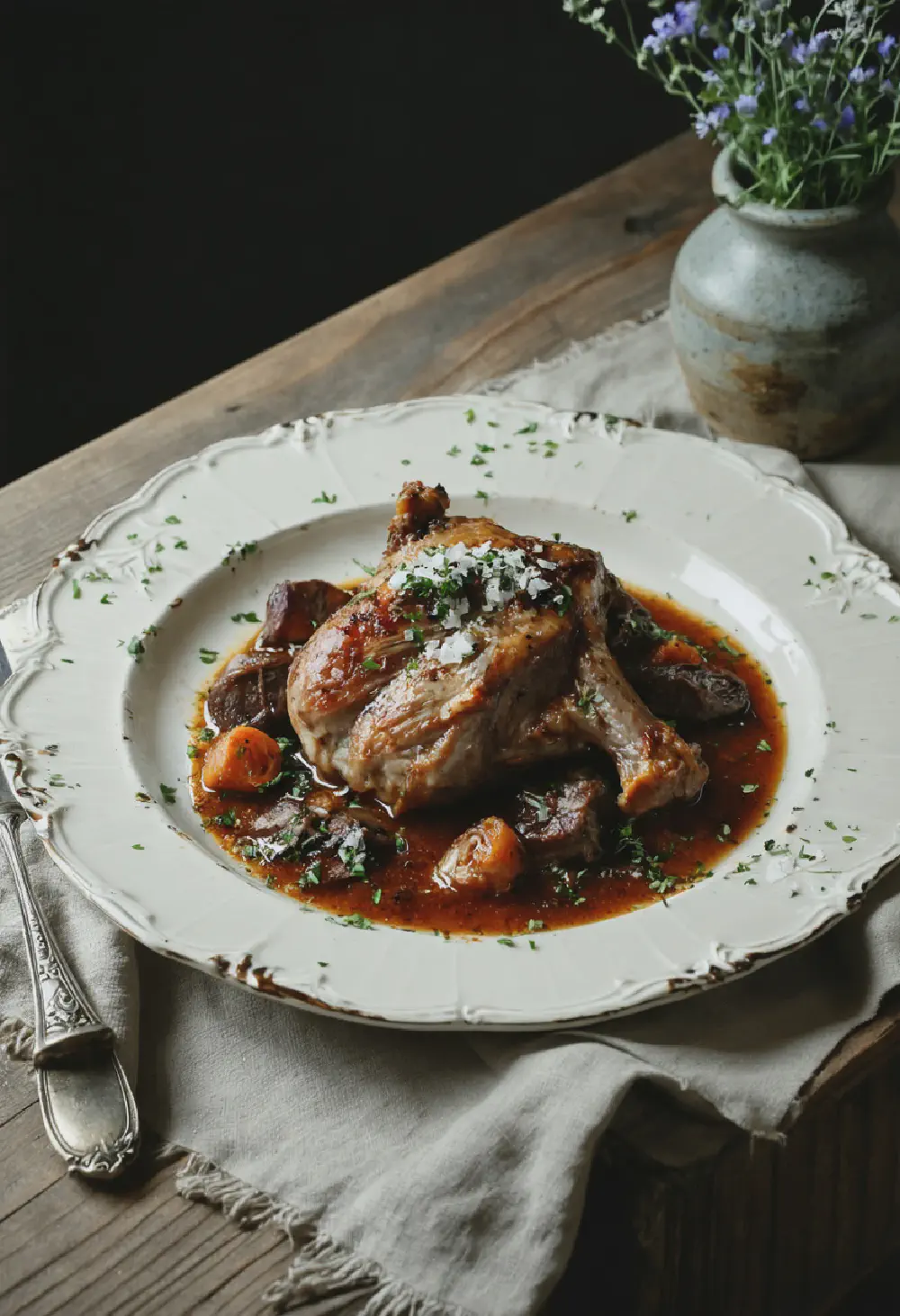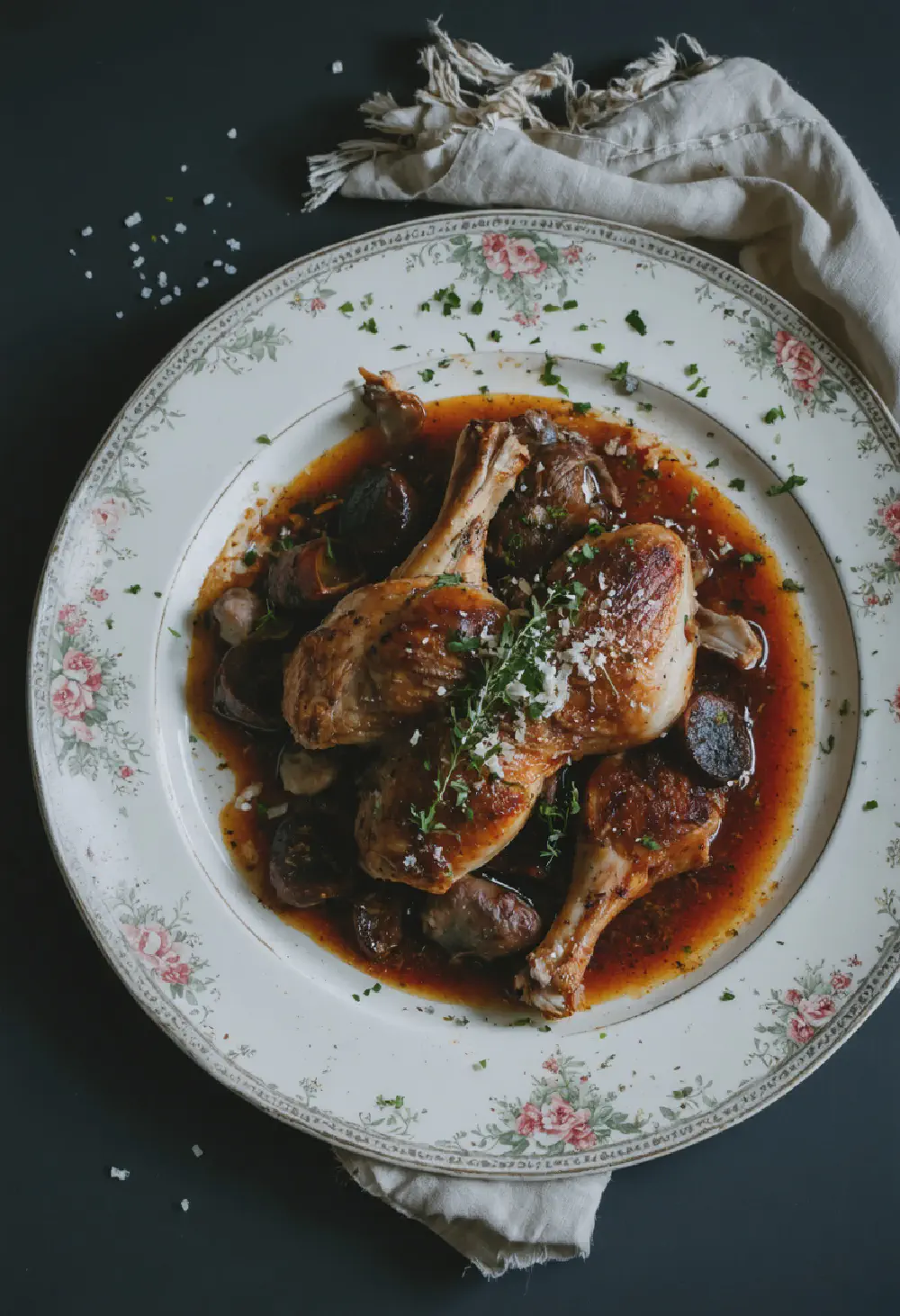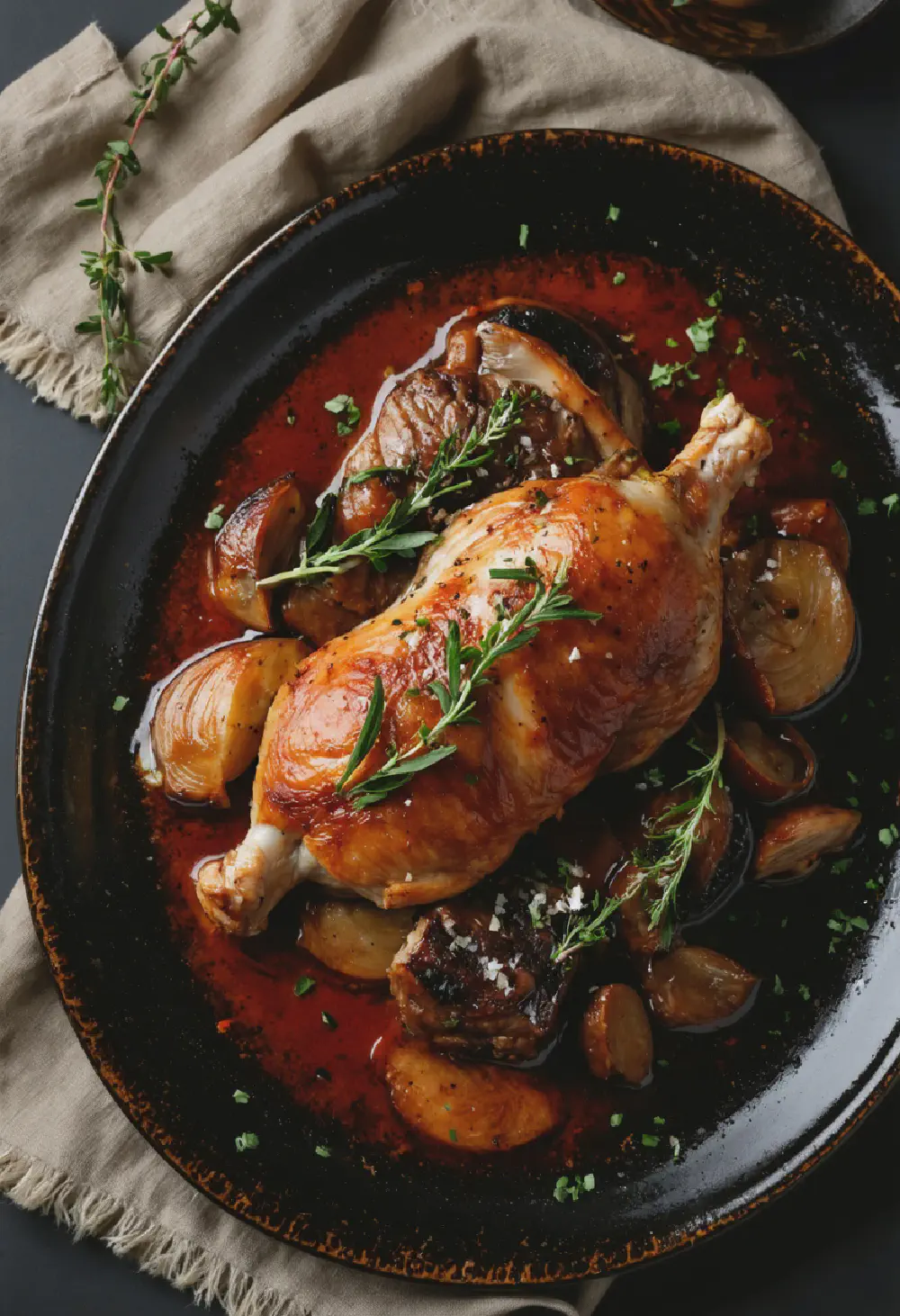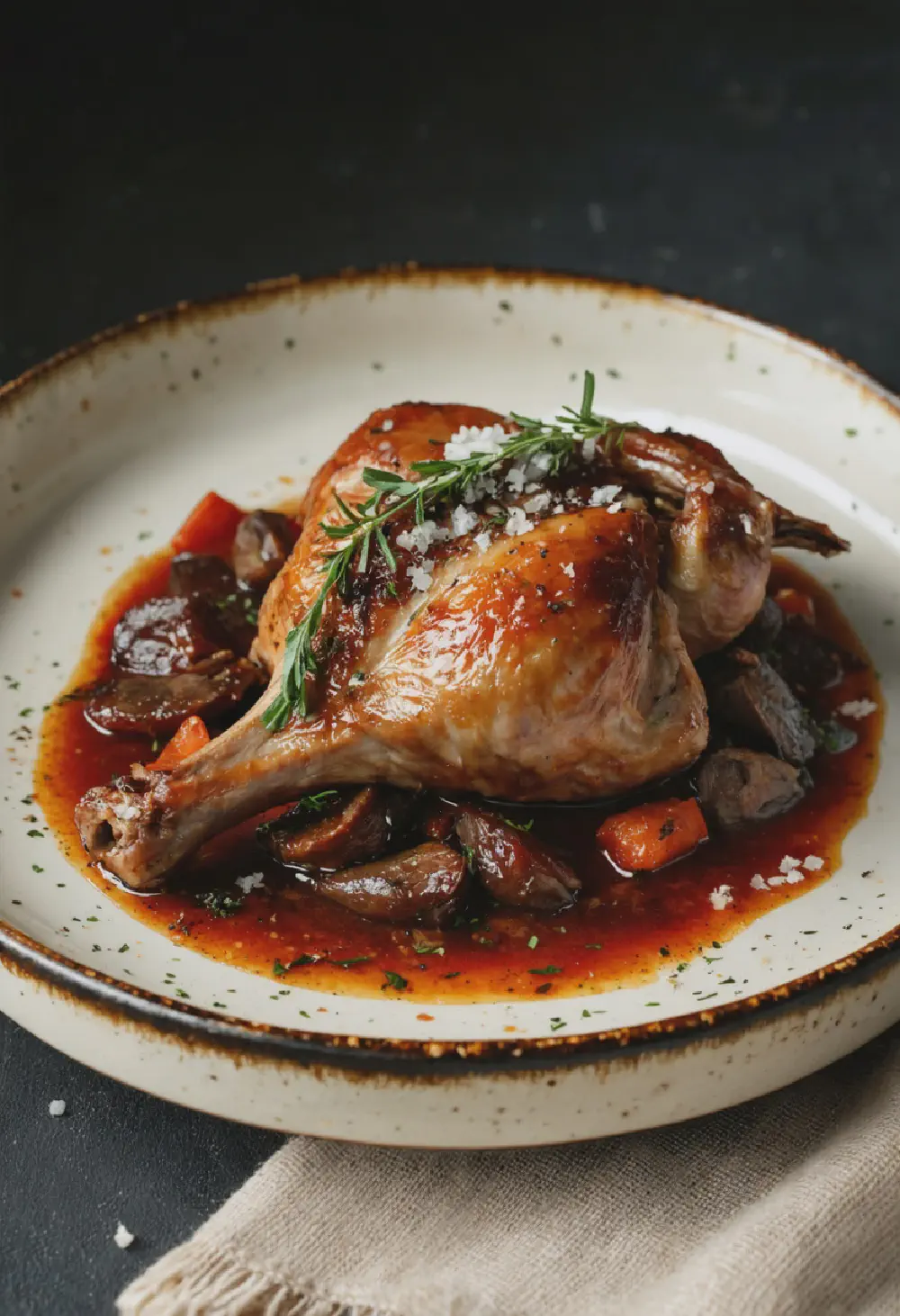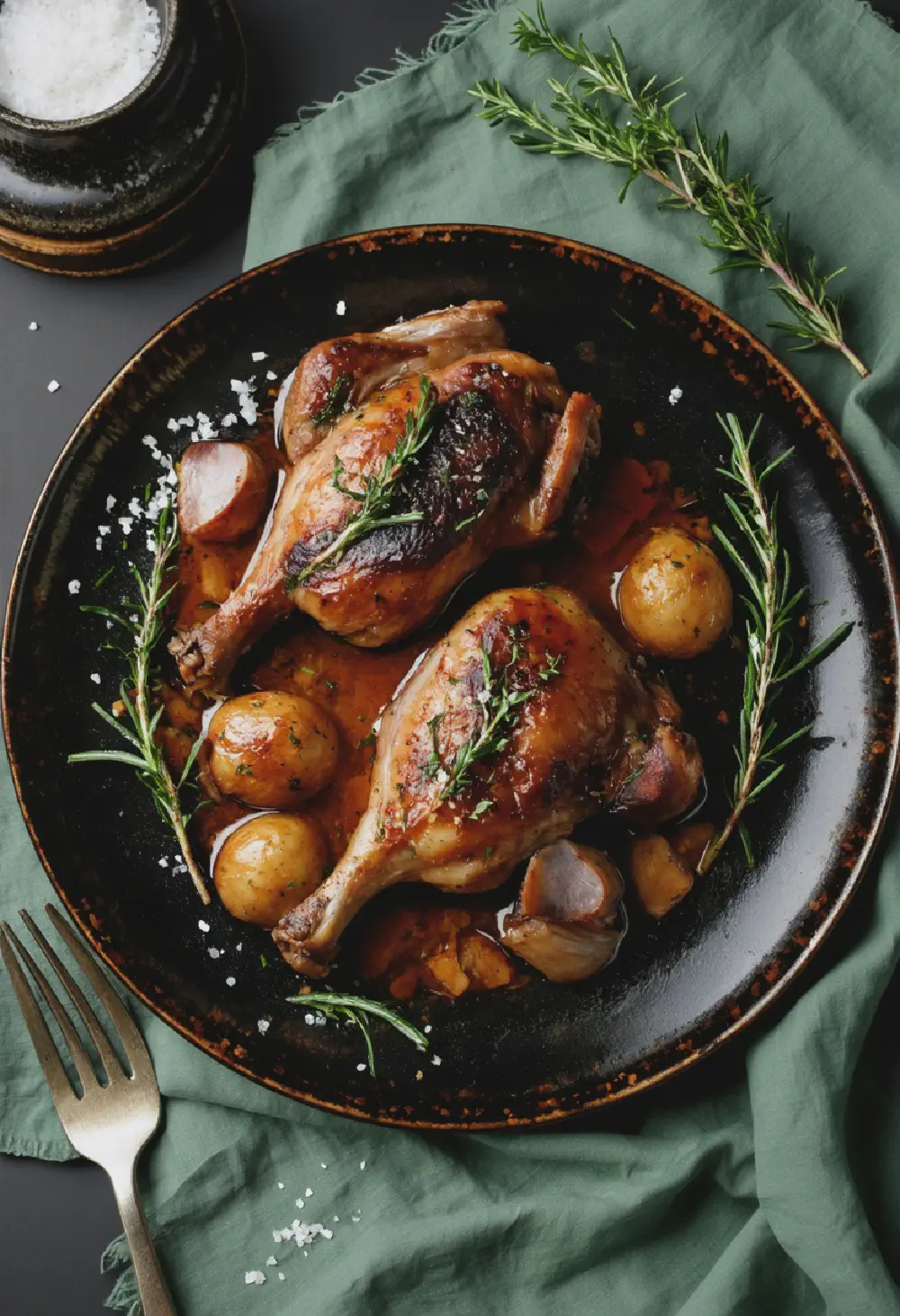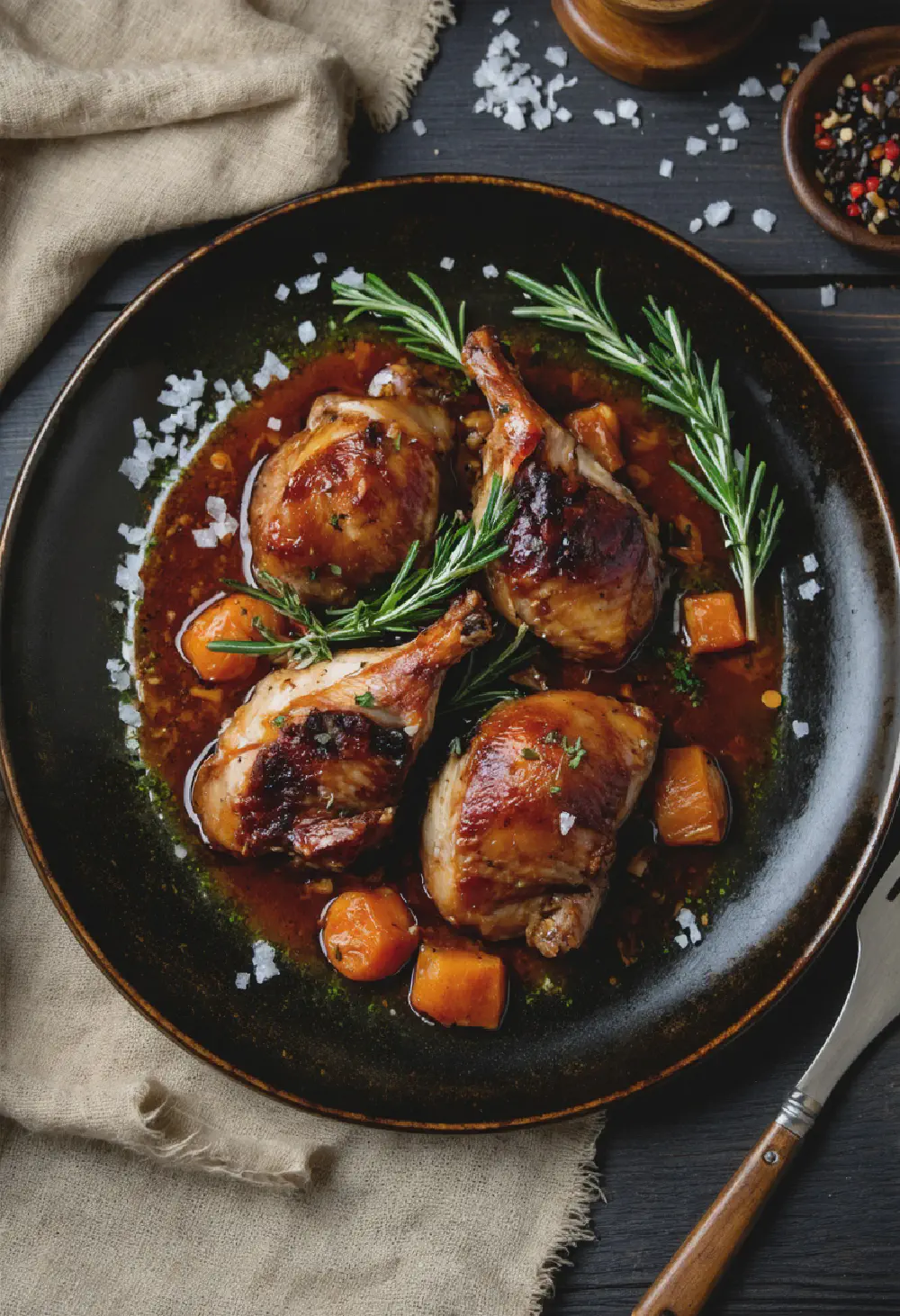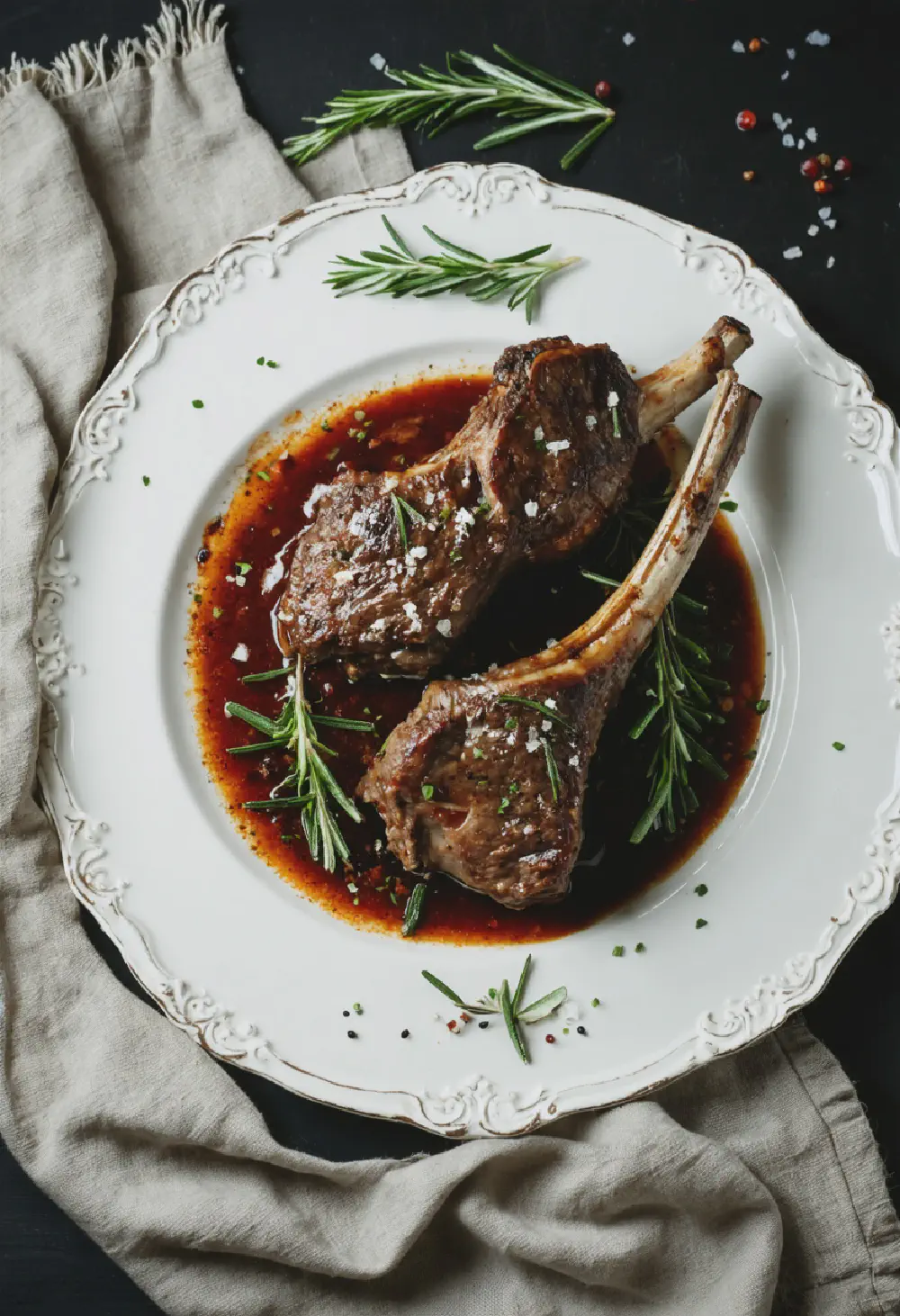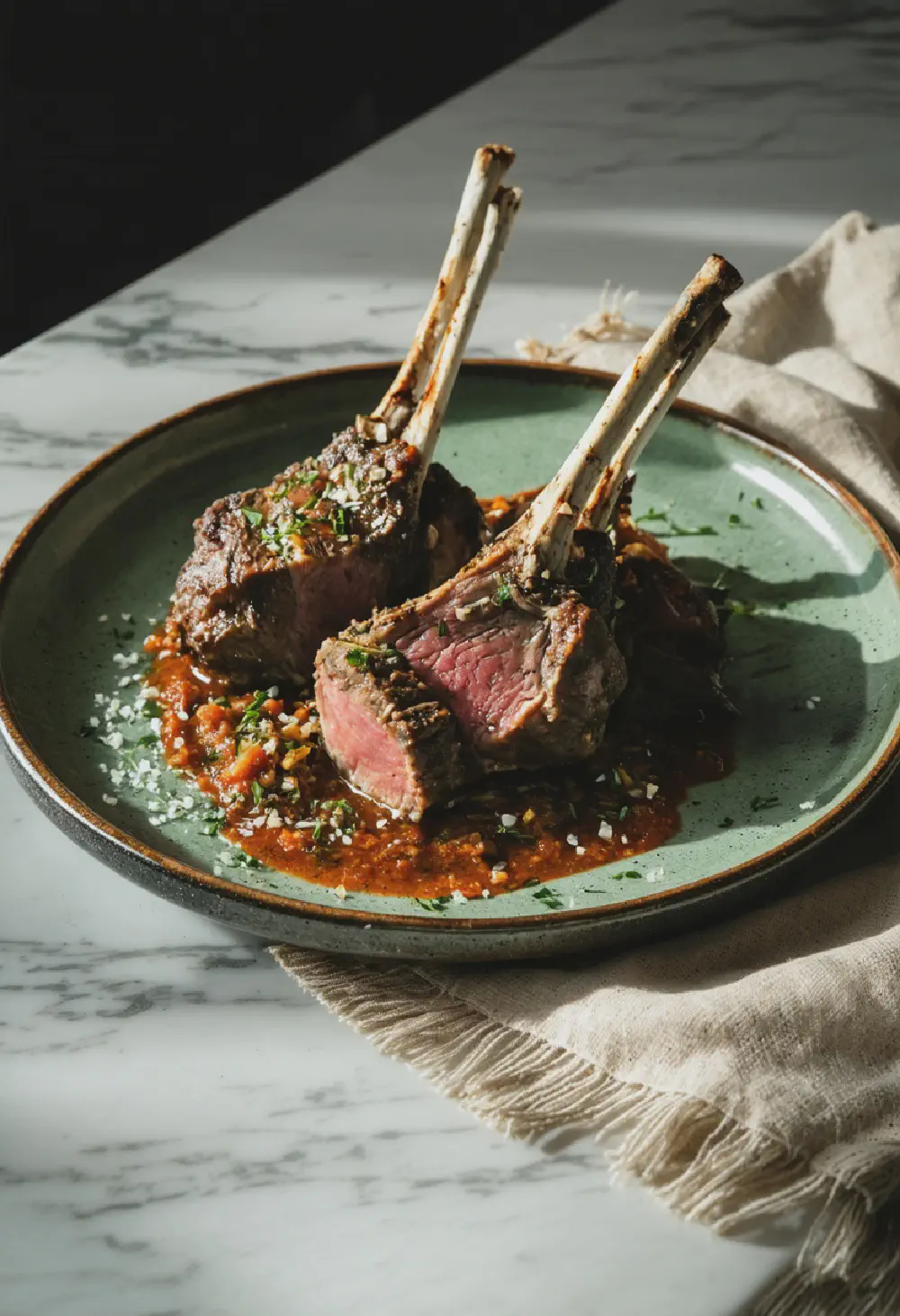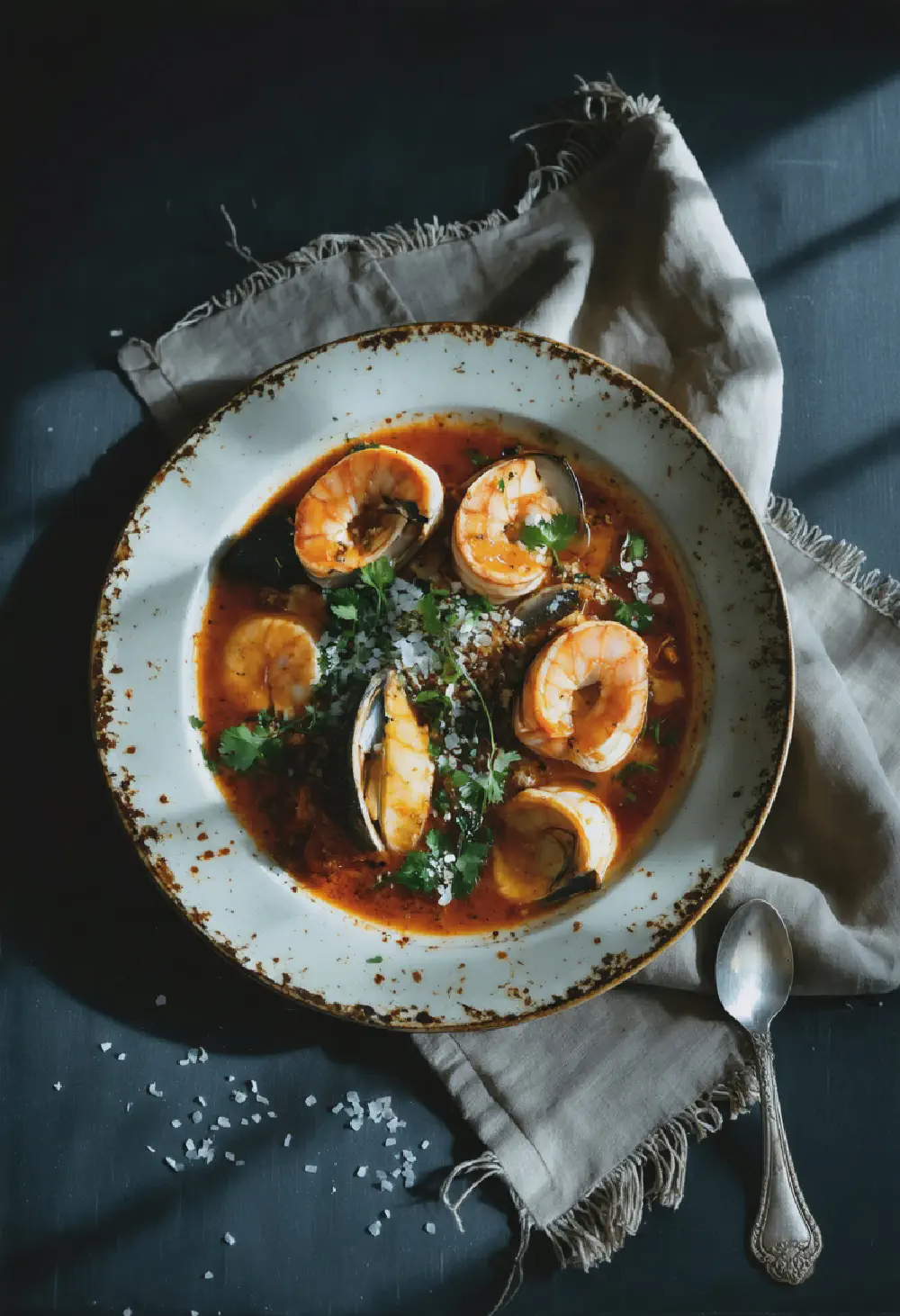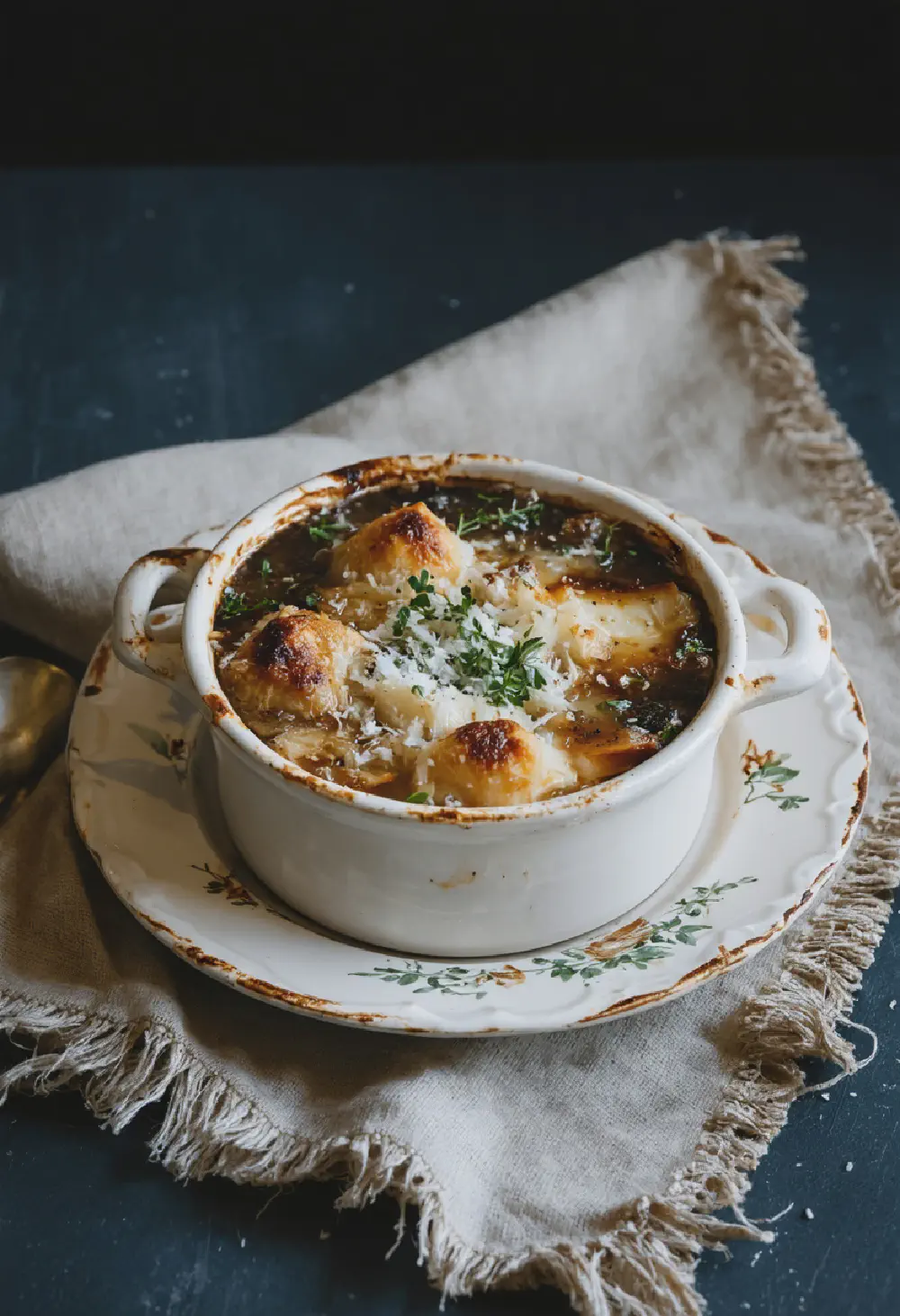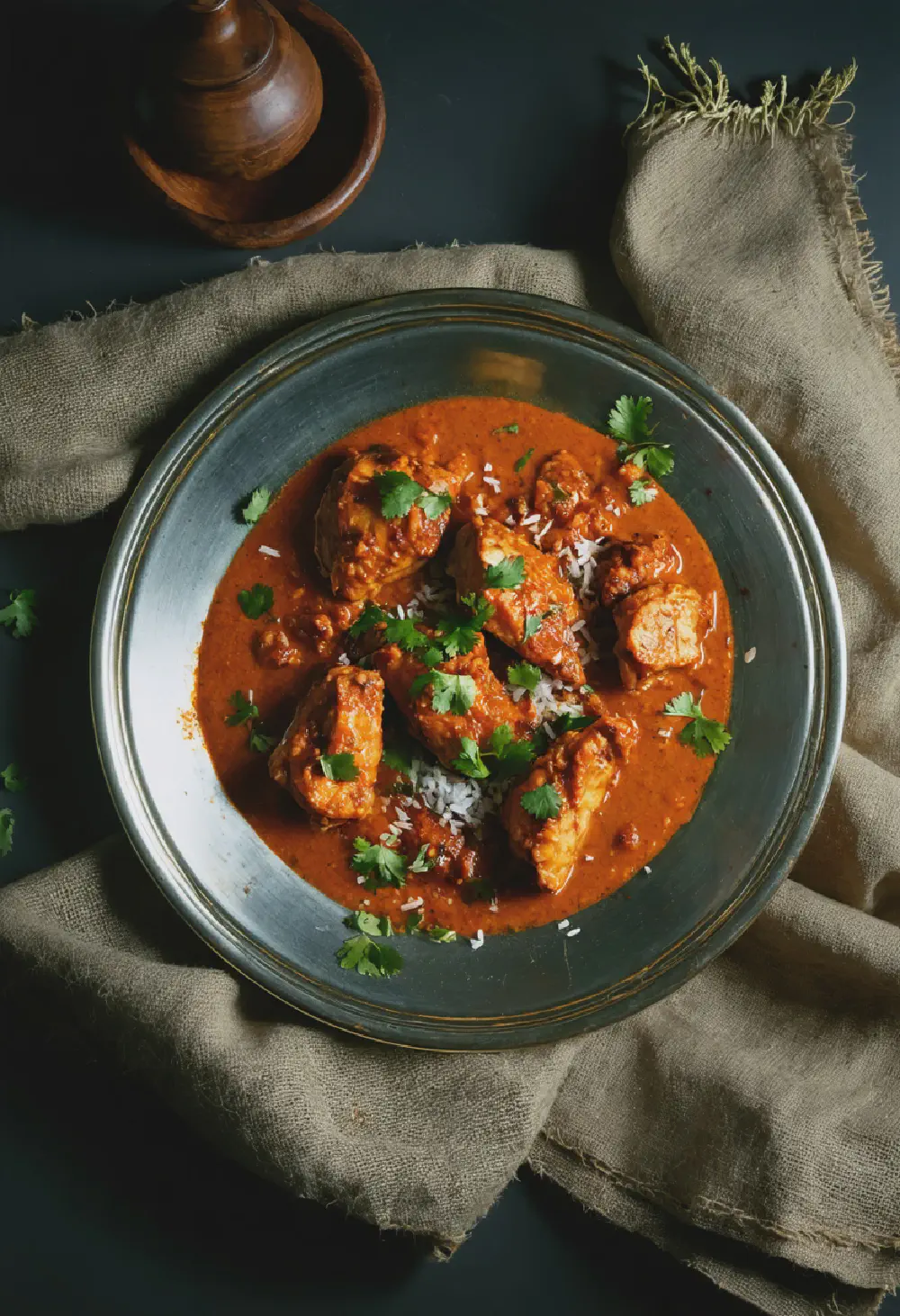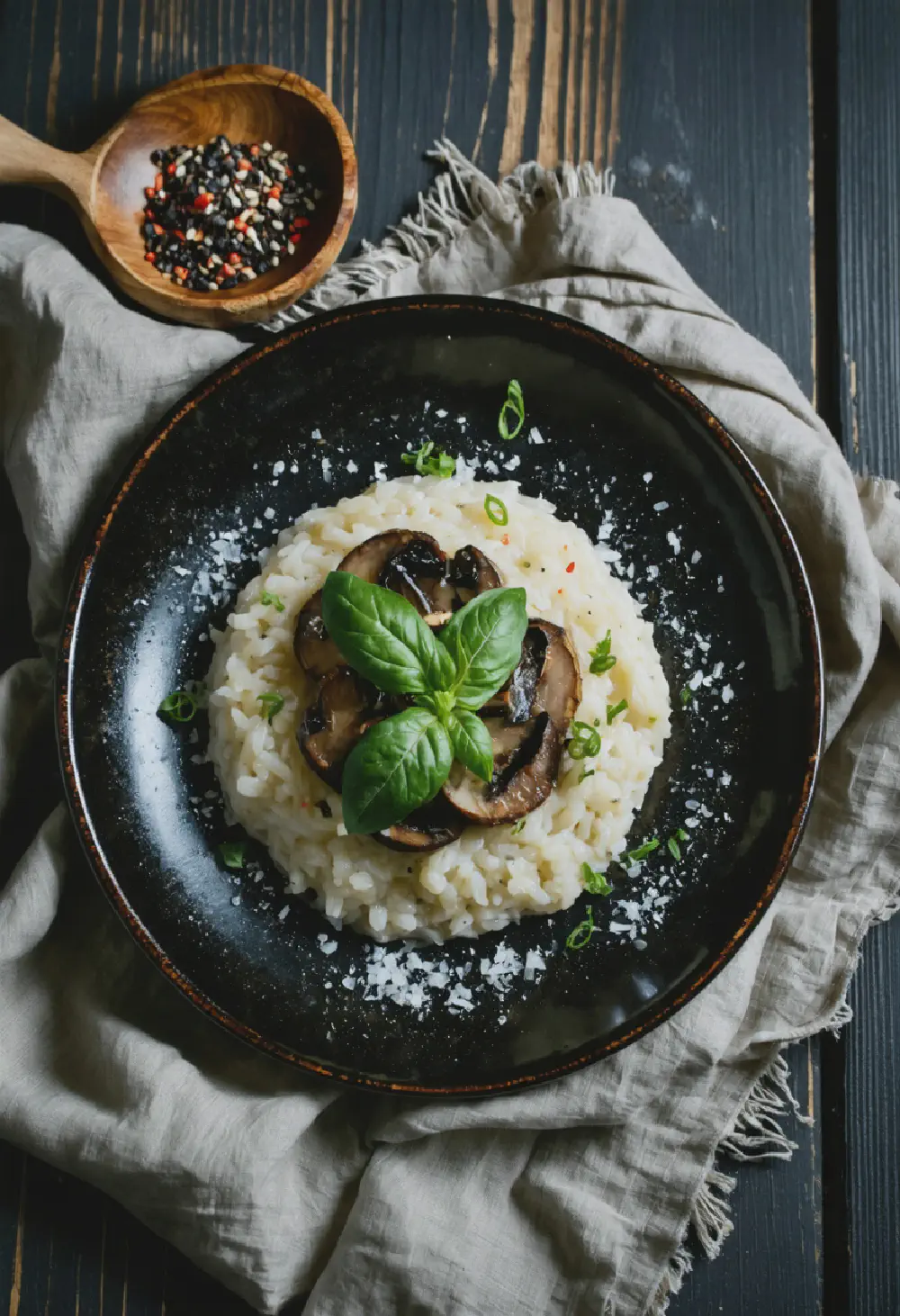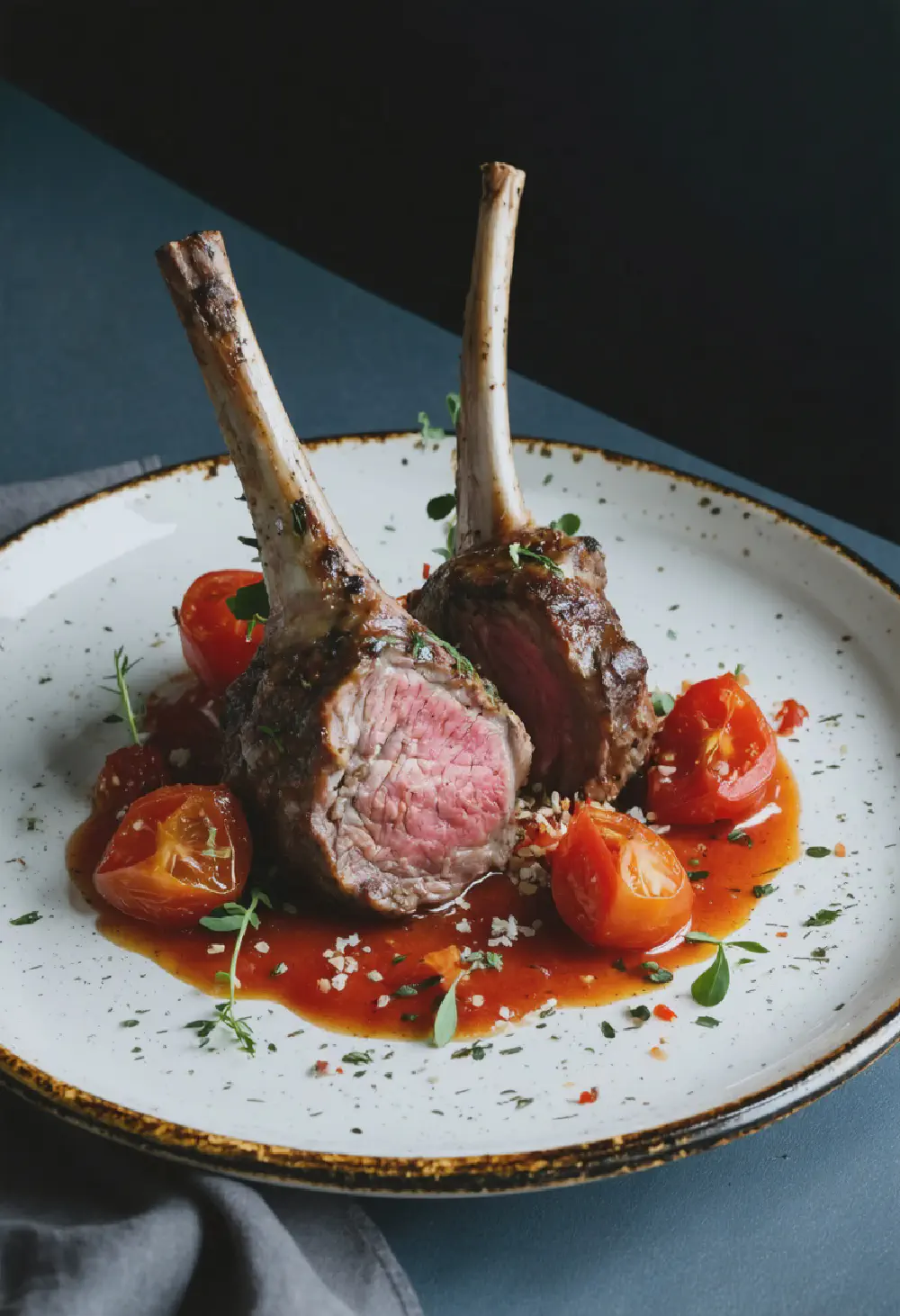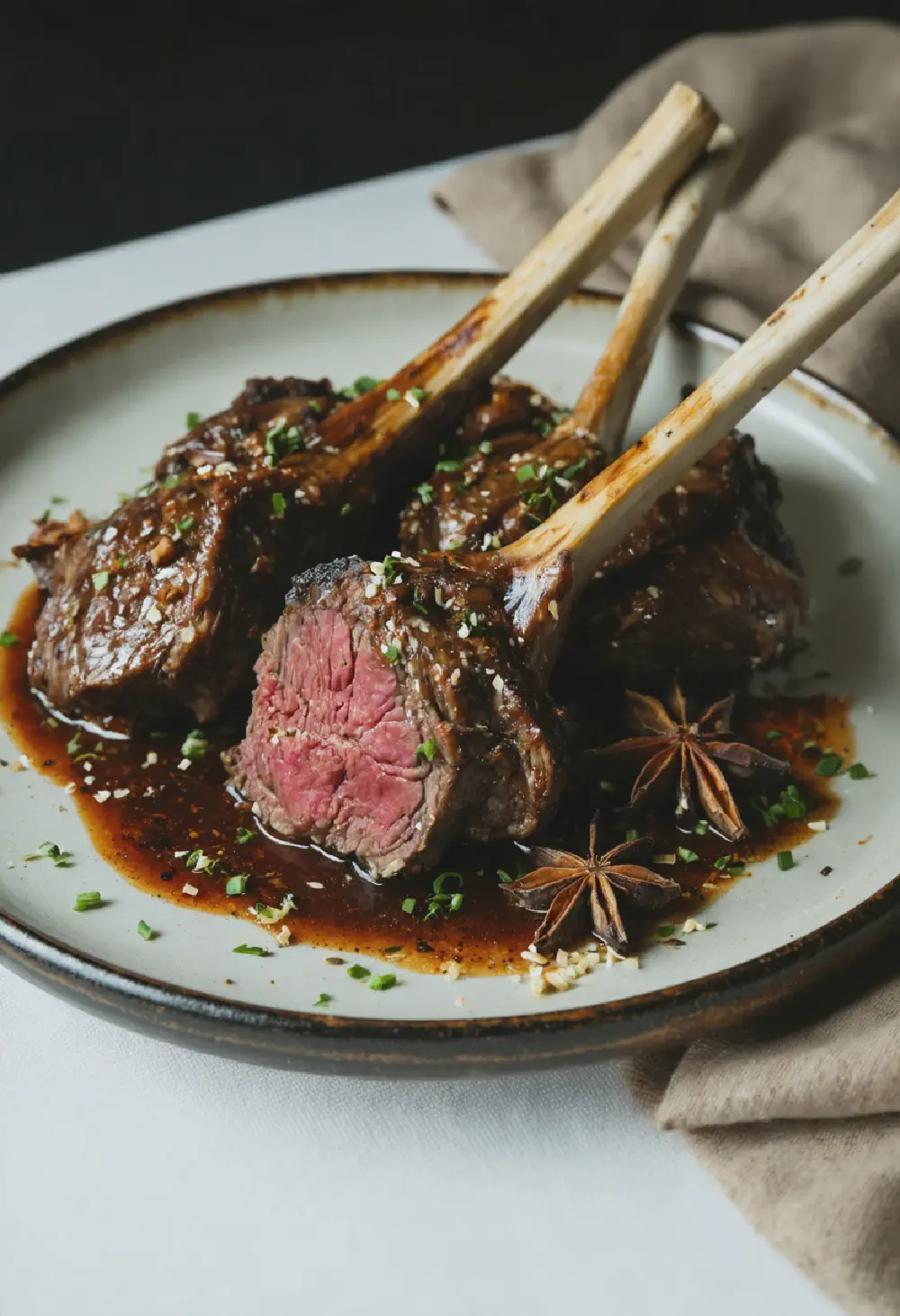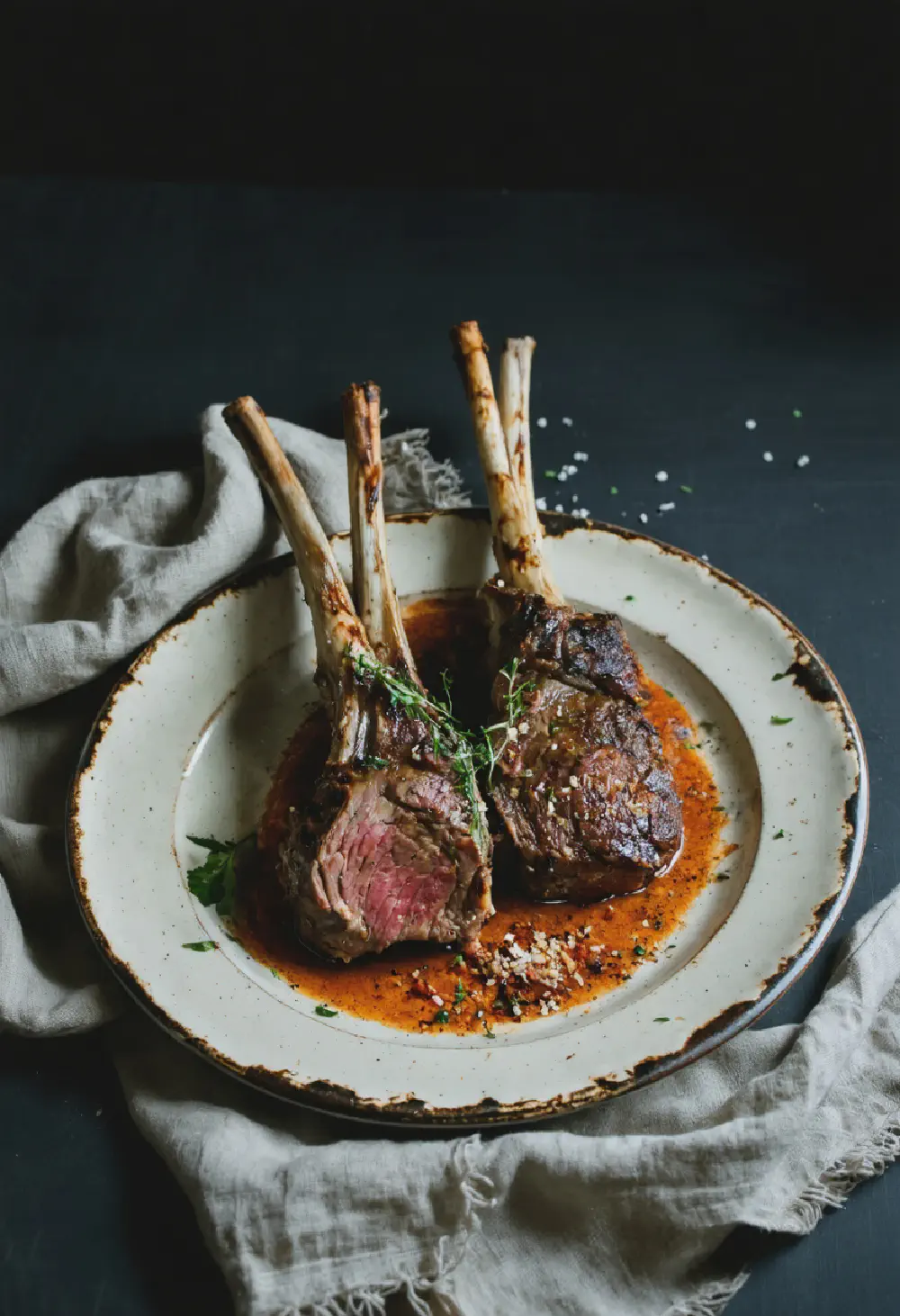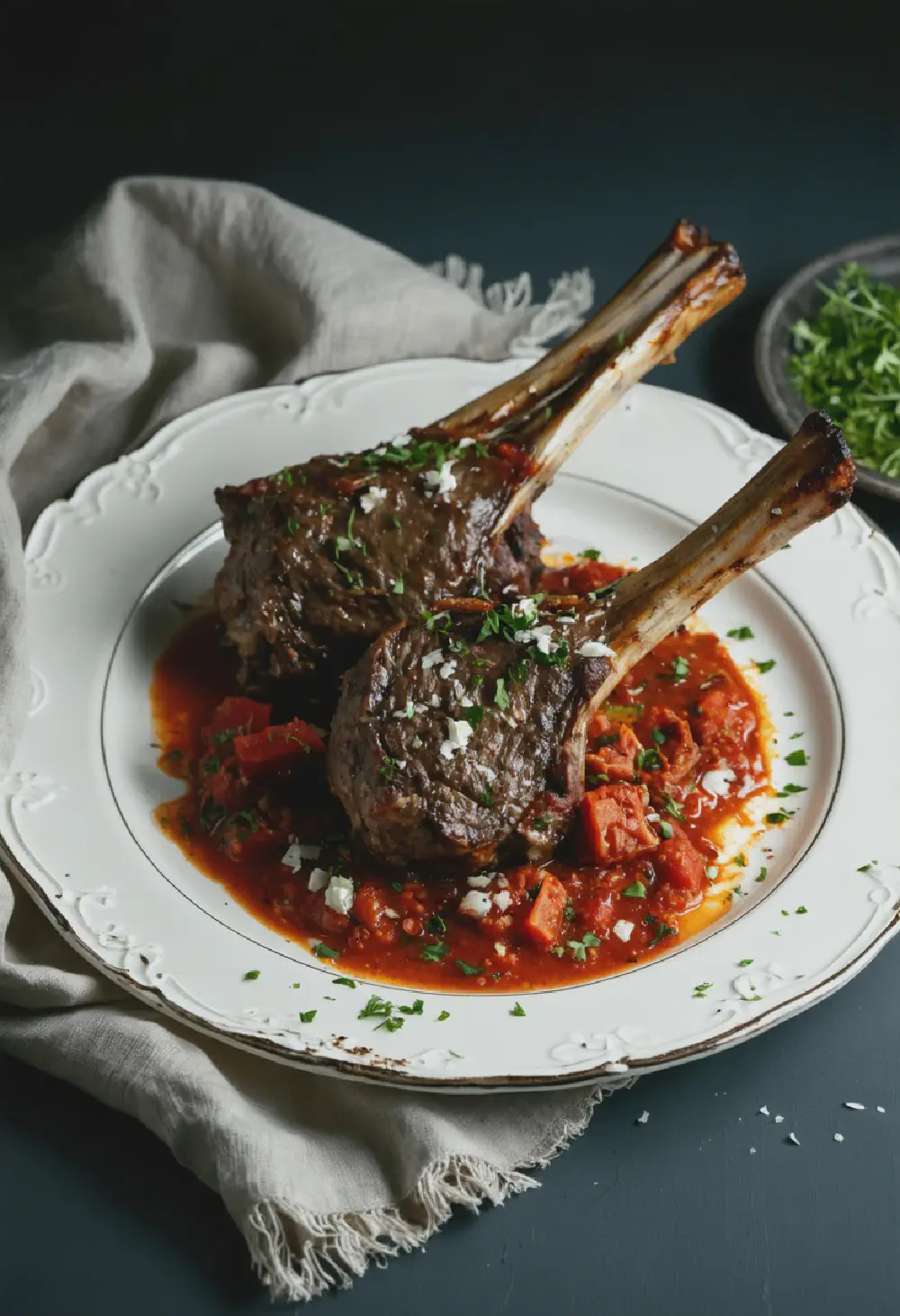Coq au Vin
30M
2H
- Makes 4 servings
- 1 whole chicken, cut into pieces
- Salt and freshly ground black pepper, to taste
- 4 tablespoons unsalted butter
- 4 slices thick-cut bacon, diced
- 1 onion, finely chopped
- 2 carrots, sliced
- 2 cloves garlic, minced
- 1 bottle (750 ml) red Burgundy wine
- 2 cups chicken stock
- 1 tablespoon tomato paste
- 1 teaspoon fresh thyme leaves
- 2 bay leaves
- 12 pearl onions, peeled
- 1/2 pound button mushrooms, quartered
- 2 tablespoons all-purpose flour
- Chopped fresh parsley, for garnish
- Season the chicken pieces generously with salt and pepper.
- In a large Dutch oven or heavy pot, melt 2 tablespoons of butter over medium heat. Add the bacon and cook until crisp. Remove the bacon with a slotted spoon and set aside.
- In the same pot, brown the chicken pieces on all sides, working in batches if necessary. Remove the chicken and set aside.
- Add the chopped onion and carrots to the pot, cooking until softened, about 5 minutes. Add the garlic and cook for another minute.
- Pour in the red wine, scraping up any browned bits from the bottom of the pot. Add the chicken stock, tomato paste, thyme, and bay leaves. Return the chicken and bacon to the pot.
- Bring the mixture to a simmer, then reduce the heat to low, cover, and cook for about 1 hour, or until the chicken is tender.
- While the chicken is cooking, in a separate pan, melt the remaining 2 tablespoons of butter over medium heat. Add the pearl onions and mushrooms, cooking until they are golden and tender, about 10 minutes.
- In a small bowl, mix the flour with a bit of the cooking liquid to make a smooth paste. Stir this into the pot to thicken the sauce. Add the cooked pearl onions and mushrooms.
- Simmer for an additional 15 minutes to allow the flavors to meld and the sauce to thicken.
- Remove the bay leaves. Taste and adjust seasoning with salt and pepper if needed.
- Serve the Coq au Vin hot, garnished with chopped fresh parsley.
Coq au Vin: A French Culinary Delight
History
Coq au Vin, translating to “rooster in wine,” is a dish that epitomizes the rich culinary heritage of France. Its origins can be traced back to ancient Gaul, where the dish was likely created as a method to tenderize tough roosters. The first documented recipe appeared in the early 20th century in Auguste Escoffier’s “Le Guide Culinaire,” cementing its place in French gastronomy. Over the years, Coq au Vin has evolved from a rustic peasant dish to a sophisticated entrée served in fine dining establishments, showcasing the adaptability and timeless appeal of French cuisine.
Taste Profile
The taste profile of Coq au Vin is a harmonious blend of robust and subtle flavors. The dish is characterized by its deep, wine-infused sauce that imparts a rich, savory taste. The traditional use of red wine, often Burgundy, adds a fruity and slightly acidic note that complements the earthiness of mushrooms and the sweetness of pearl onions. The slow cooking process melds these flavors together, resulting in tender, succulent chicken that is both comforting and indulgent. The addition of bacon or lardons introduces a smoky undertone, enhancing the overall complexity of the dish.
Cultural Significance
Within French cuisine, Coq au Vin holds a special place as a symbol of comfort and celebration. It is often associated with gatherings and special occasions, embodying the French ethos of savoring life’s pleasures through food. The dish’s versatility allows it to be enjoyed in various settings, from a cozy family dinner to an elegant dinner party. Coq au Vin also reflects the French appreciation for regional ingredients and traditional cooking methods, highlighting the country’s diverse culinary landscape. Its enduring popularity both in France and around the world underscores its cultural significance and the universal appeal of French gastronomy.
